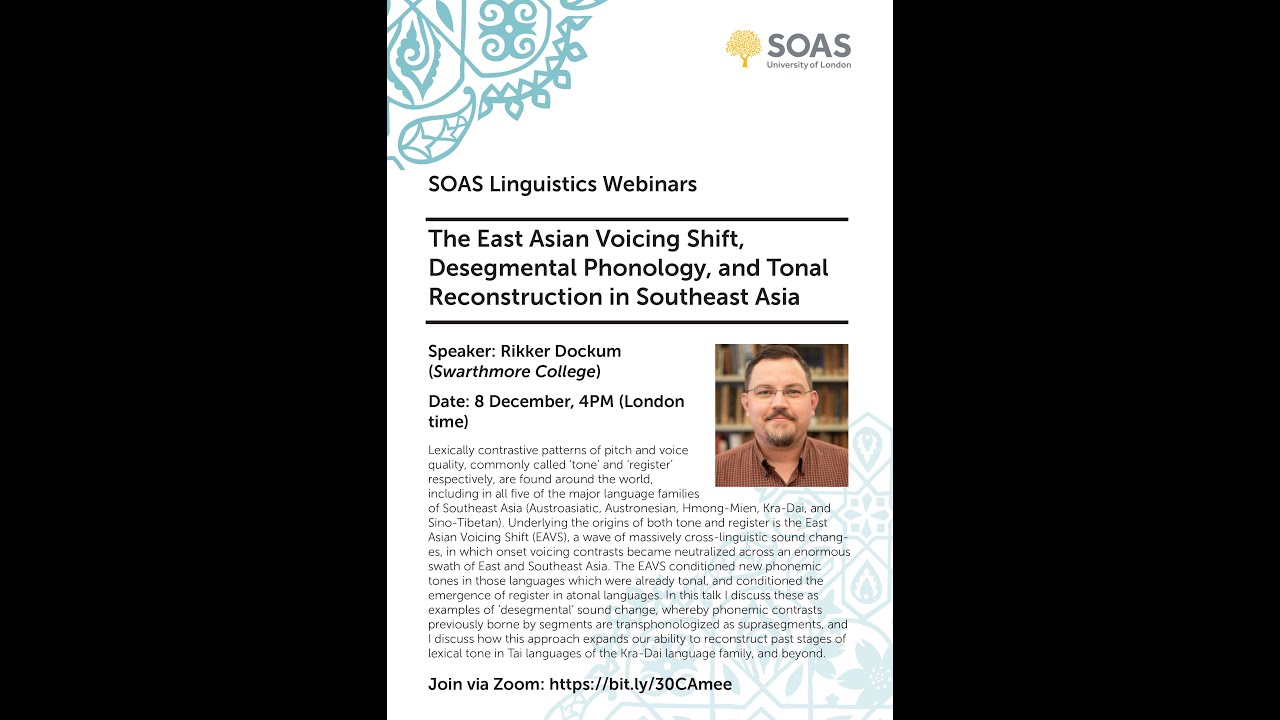The East Asian Voicing Shift
Local hero @rikker’s talk on tone in East Asia is now online, check it out!
![]()
Abstract: Lexically contrastive patterns of pitch and voice quality, commonly called ‘tone’ and ‘register’ respectively, are found around the world, including in all five of the major language families of Southeast Asia (Austroasiatic, Austroasiatic, Hmong-Mien, Kra-Dai, and Sino-Tibetan). Underlying the origins of both tone and register is the East Asian Voicing Shift (EAVS), a wave of massively cross-linguistic sound changes, in which onset voicing contrasts became neutralized across an enormous swath of East and Southeast Asia. The EAVS conditioned new phonemic tones in those languages which were already tonal, and conditioned the emergence of register in atonal languages. In this talk I discuss these as examples of ‘desegmental’ sound change, whereby phonemic contrasts previously borne by segments are transphonologized as suprasegments, and I discuss how this approach expands our ability to reconstruct past stages of lexical tone in Tai languages of the Kra-Dai language family, and beyond.

 )
)